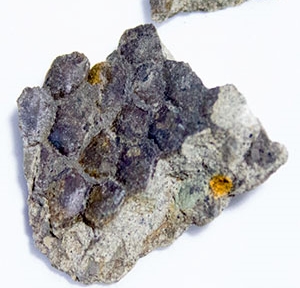 GRAND PRAIRIE – The discovery by Canadian researchers of well-preserved dinosaur remains has proven to be a direct challenge to longstanding evolutionary assumptions.
GRAND PRAIRIE – The discovery by Canadian researchers of well-preserved dinosaur remains has proven to be a direct challenge to longstanding evolutionary assumptions.
In June of last year, a group of scientists with Canadian Light Source (CLS)—a research team dedicated primarily to studying the composition of matter via synchrotron science—unearthed a fascinating dinosaur fossil in western Alberta. Much to the researchers’ astonishment, a piece of well-preserved dinosaur skin was attached to the hadrosaur fossil.
One of the scientists on the team, University of Regina physicist Mauricio Barbi, was thrilled about the discovery, commenting that the specimen could be a key to learning more about what dinosaurs looked like.
“If we are able to observe the melanosomes and their shape,” he explained in a CLS press release, “it will be the first time pigments have been identified in the skin of a dinosaur. We have no real idea what the skin looks like. … There has been research that proved the color of some dinosaur feathers, but never skin.”
Barbi also wants to learn more about the theoretical evolution of the hadrosaur from studying this particular fossil.
“As we use high technology to understand the inner structure of these things,” he told the Leader-Post, “I can contribute to the understanding of our animals and how they evolved.”
Meanwhile, as some scientists are elated by this discovery’s implications, others are asking a very basic question: How could this dinosaur skin—which, according to evolutionary models, is at least 60 million years old—have possibly remained intact without decaying away?
Many Biblical creationists say the answer is simple: It couldn’t have.
Brian Thomas, head science writer for the Institute for Creation Research (ICR), recently published an article for ICR, in which he details why it is absurd to believe that dinosaur skin like this could have possibly survived for tens of millions of years.
“Who, upon entering a room and encountering a burning candle,” he wrote, “would immediately begin to wonder what special something about that candle enabled it to continually burn for a million years? Would it not make more sense to first question how long such a candle could potentially burn before going out?”
In an interview with Christian News Network, Thomas explained that skin is primarily comprised of collagen, which is a tough, insoluble protein. Despite its resilience, rigorous tests have shown that collagen (like other proteins) decays steadily over time, and—even in ideal, “best case” scenarios—could never last more than one million years. In fact, under realistic conditions, collagen’s maximum “shelf life” is probably closer to 300,000 years.
Given the constant decay rate of proteins, Thomas compared the collagen in dinosaur skin to an egg timer.
“When the timer ‘dings,’ there should be no skin left,” he stated. “Even if it’s encased in rock, it turns into dust right in the middle of the rock, because of the nature of the chemistry. So … the timer should have ‘dinged’ long before the millions of years that evolutionists have provided for these kinds of fossils.”
Even though findings like the one in Alberta are rare, Thomas mentioned that there have been several other discoveries of soft tissue and proteins in fossils that are supposedly millions of years old. A list from the ICR website chronicles numerous peer-reviewed journal articles over the years that have reported such findings.
On the other hand, a much better explanation for the existence of these animal remains, Thomas remarked, would be the young-earth Creation model. According to this belief, based upon the Scriptures, most dinosaur fossils were buried during the Great Flood around 4,400 years ago.
Nevertheless, despite what he sees as mounting evidence, Thomas pointed out that evolutionists still dogmatically claim that these animal remains are millions of years old.
“They do, they have, and they will,” he said.
Photo: Canadian Light Source/University of Regina
Become a Christian News Network Supporter...


